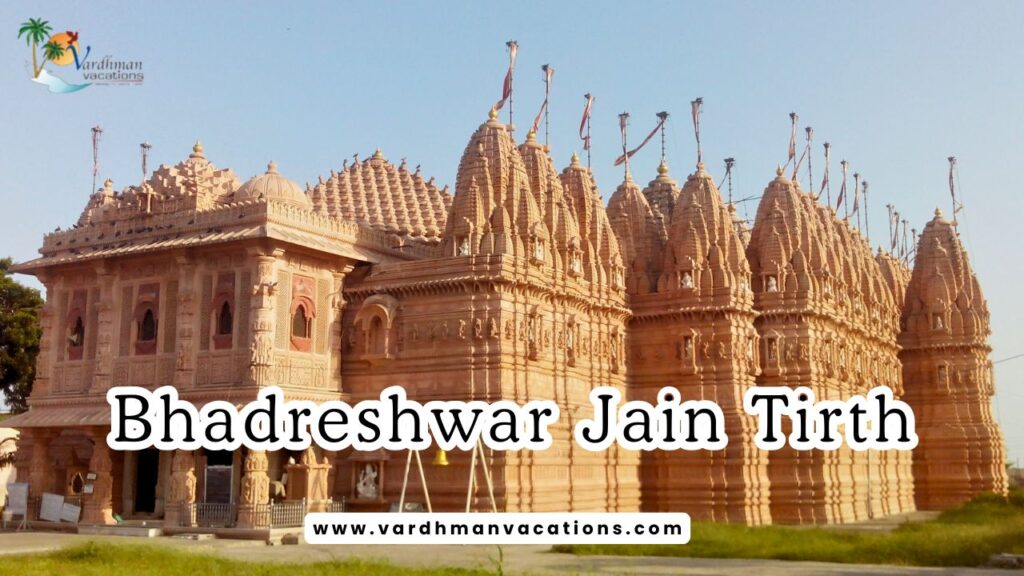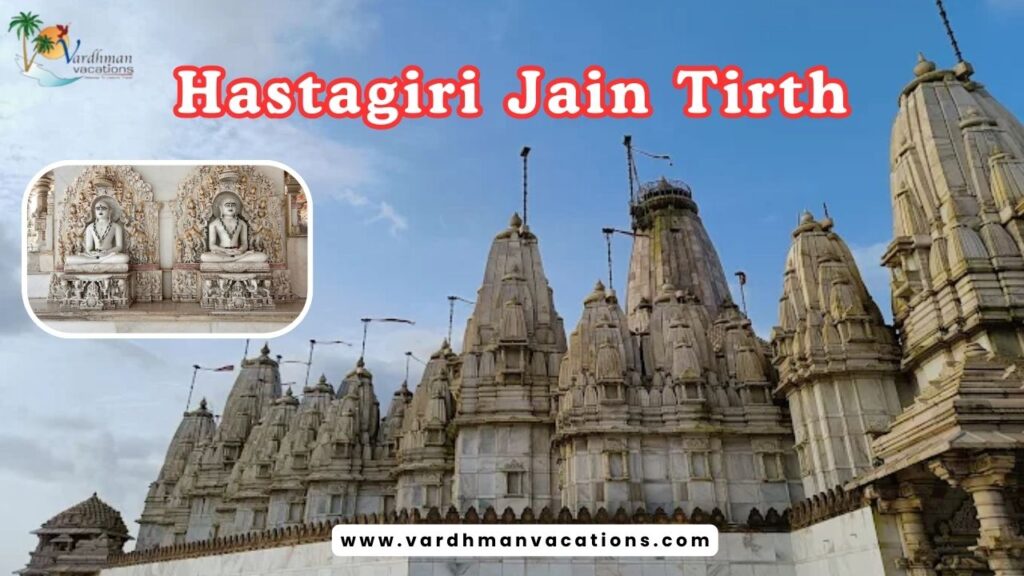Devagriha, meaning the “abode of the gods”, has over time become known as Deoghar, located in the Santhal Pargana district of Jharkhand. The town is most famous for the Baidyanath Dham, one of the twelve Jyotirlingas of Lord Shiva and a prominent Hindu pilgrimage site.
Mythological Origins of Baidyanath Dham
According to legend, King Ravana of Lanka, empowered by the blessings of Brahma, attempted to carry Lord Shiva from Mount Kailash to install him in Lanka. However, Lord Shiva was reluctant. The water god Varuna, through divine trickery, distracted Ravana. As a result, Ravana accidentally set Shiva down at Deoghar, breaking his vow. It is said that Lord Shiva chose to remain there, making Deoghar a sacred site for eternity.
Temple Architecture and Deities

The main temple of Lord Shiva is round. The flower-garlanded idol of Shiva is visible to devotees only during the evening bathing ceremony. In addition to the main deity, the temple premises house idols of several other forms of Shiva, including Annapurna, Baidyanath, Siddhinath, Kedarnath, Indreswar, Ganpateswar, Bisheswar (of Kashi), Ravaneswar, Bhuteswar, and Mahakal — all representing the nine Anadi (primordial) forms of Shiva.
The Holy Ksheer Ganga Pond
To the north of the temple lies the Ksheer Ganga, a sacred pond with 150 steps. Bathing in this pond before darshan is believed to yield the spiritual merit of a thousand recitations of prayers. The actual Ganga River flows approximately 6 km away from the temple.
Tapovan and Nearby Spiritual Spots
Located about 6 km from Clock Tower, Tapovan is a serene destination filled with spiritual and natural beauty. En route, one can visit Jagabandhu Ashram, Naolaksha Temple, and a large statue of Hanuman. A short distance from Hanuman’s statue lies Devi Kundeswari. The road leading to Tapovan features alternating high and low slopes and takes around 4 hours to explore, along with Tapovan, Naolaksha, and Kundeswari.

Tapovan is renowned for its mesmerizing landscape and spiritual significance. Balananda Brahmachari Maharaj attained salvation here through intense meditation, guarded by a tiger. The path to Tapovan involves narrow cave crossings and steep ascents — truly a divine experience. At the southeast corner, there are two sacred kunds: Shiva Kund and Shul Kund. It is believed that the sage Valmiki meditated here, and Sita Devi also bathed in these waters. The peak, 350 ft high, offers panoramic views and houses the Balananda Temple, established in 1348 BS.
Temples of Devi Kundeswari and Nabadurga
In 1844, Ramomoy Bandyopadhyay, following a divine dream, discovered the image of Debi Kundeswari and built a temple. The deity is Chaturbhuja (four-armed), seated on a lion and slaying Karingasura as Jagadhatri. Her presence is considered both beautiful and potent.
Later, in 1360 BS, the Nabadurga Temple was built at Bompas Town, 3 km from the Clock Tower. It features Devi Durga standing on a lion, along with wall paintings of Asta Matrika (Eight Divine Mothers) and other deities.
Trikut and Nandan Hills

About 16 km from the Clock Tower on Dumka Road lies Trikut Hill, a majestic 5,500 ft high formation. The hill is home to various animals and sacred sites like Trikuteswar Mahadev and Ram-Sita Terrace. The hill’s breathtaking natural beauty and spirituality attract numerous tourists. Hiring a local guide is recommended for a safe and informative trek.
Another scenic destination is Nandan Hill, located about 4 km on Kachhari Road from the Tower. Here, a temple houses Goddess Parvati and her sons Kartik and Ganesha. Visitors often pay respects at the cemetery of Thakur, a revered figure, especially on January 27, the date of his samadhi in 1969.
Despite its spiritual significance, the Ashram headquarters located here has experienced internal divisions, leading to a sense of discord among followers.
Deogarh Digambar Jain Mandir

Not just for Hindus, Deoghar is home to a significant Digambar Jain Atishaya Kshetra. The Deogarh Digambar Jain Mandir, situated at Tower Chowk, just 1.5 km from Baidyanath Dham, holds a special place in the hearts of Digambar Jains. This serene temple complex features a beautiful white idol of Shri Shantinath Bhagwan (16th Tirthankar) in Padmasana posture, alongside ancient statues of Rishabhdev, Neminath, and Mahavir Swami. The temple’s Shikhara-style architecture and serene atmosphere make it an ideal spot for meditation and darshan.
Devotees believe the site possesses miraculous powers, classifying it as an Atishaya Kshetra. Amenities such as a parikrama path, dharmshala, and bhojanshala cater to pilgrims, making the temple not just a place of worship, but also of community and comfort.
Highlights of Digambar Jain Mandir
| Feature | Description |
|---|---|
| Main Idol | White idol of Shri Shantinath Bhagwan in Padmasana posture |
| Ancient Idols | Other idols include Rishabhdev, Neminath, and Mahavir Swami |
| Architecture | Traditional Shikhara-style temple with intricate carvings |
| Peaceful Complex | Ideal for meditation and peaceful darshan |
| Atishaya Belief | Believed to bless devotees with miraculous outcomes |
| Parikrama Path | Allows circumambulation within the temple complex |
| Facilities | Dharmshala and Bhojanshala available for pilgrims |
Final Thoughts
Deoghar is a divine and multifaceted pilgrimage destination. From the revered Baidyanath Jyotirlinga to ancient Jain temples, serene hills, and mythological landmarks, it blends spirituality, nature, and history. Whether you’re a pilgrim, a nature lover, or a curious traveler, Deoghar promises a spiritually enriching and memorable experience.
Tip: Don’t forget to explore local bazaars near Bajranghali Chowk and sample the simple yet delicious fare served at the town’s traditional Bhojanshalas. Deoghar truly is where stories, spirituality, and scenery come together.
FAQ About Deoghar
Deoghar is best known for the Baidyanath Jyotirlinga Temple, one of the twelve Jyotirlingas of Lord Shiva. It is a major pilgrimage site for Hindus, especially during the Shravani Mela. The town also holds significance for Jain devotees and nature lovers.
Baidyanath Dham Temple: The main temple dedicated to Lord Shiva.
Ksheer Ganga Pond: A sacred pond associated with spiritual rituals.
Naolaksha Temple: Known for its ornate architecture.
Tapovan: A site of natural beauty with religious significance.
Debi Kundeswari Temple: Dedicated to the powerful goddess Kundeswari.
Nabadurga Temple: Famous for its wall paintings of the Eight Mother Goddesses.
Deogarh Digambar Jain Mandir: Important Jain temple near Tower Chowk.
The most popular time to visit is during the Shravani Mela (July–August), when the temple hosts massive pilgrim gatherings. However, Deoghar can be visited throughout the year, with pleasant weather from October to February being ideal for sightseeing and exploration.
By Air: The nearest airport is Deoghar Airport (DGH) with flights connecting from major cities like Delhi and Kolkata.
By Train: Deoghar has a well-connected railway station (Deoghar Junction). Jasidih Junction (7 km away) is another major railhead.
By Road: Deoghar is well connected by roads and buses from cities like Patna, Ranchi, Kolkata, and Dhanbad.
Yes, Deoghar is surrounded by scenic spots:
Tapovan: Known for hills, caves, and natural trails.
Trikut Hill: A 5,500 ft hill ideal for trekking and wildlife sightings.
Nandan Hill: Another hill with panoramic views and a temple at the summit.
A 2 to 3-day trip is sufficient to explore Baidyanath Temple, Trikut Hill, Tapovan, Kundeswari Temple, and the Digambar Jain Temple. Pilgrims may choose to stay longer during religious festivals.
Jain pilgrims visit the Deogarh Digambar Jain Mandir, a revered Atishaya Kshetra (site of miracles) with a peaceful complex and facilities like a dharmshala and bhojanshala for a comfortable stay and meals.
Yes, Deoghar has plenty of accommodation options ranging from budget dharamshalas to mid-range hotels. Jain dharamshalas and lodges are also available near the temple and Tower Chowk area.
Yes, markets like Bajranghali Chowk and Old Mina Bazaar are perfect for exploring local handicrafts, religious items, and experiencing the vibrant culture of the town.
Yes, non-Hindus can enter the Baidyanath Temple complex, but they are expected to follow the temple rules, maintain decorum, and dress modestly.
Yes, Deoghar is generally safe for all travelers. However, it is advisable to travel in groups during late evenings, especially during crowded festivals.
Generally, photography is restricted inside the sanctum of main temples for religious reasons, but you can capture the beauty of temple exteriors and the surrounding landscapes. It’s best to check specific rules at each shrine entrance.






